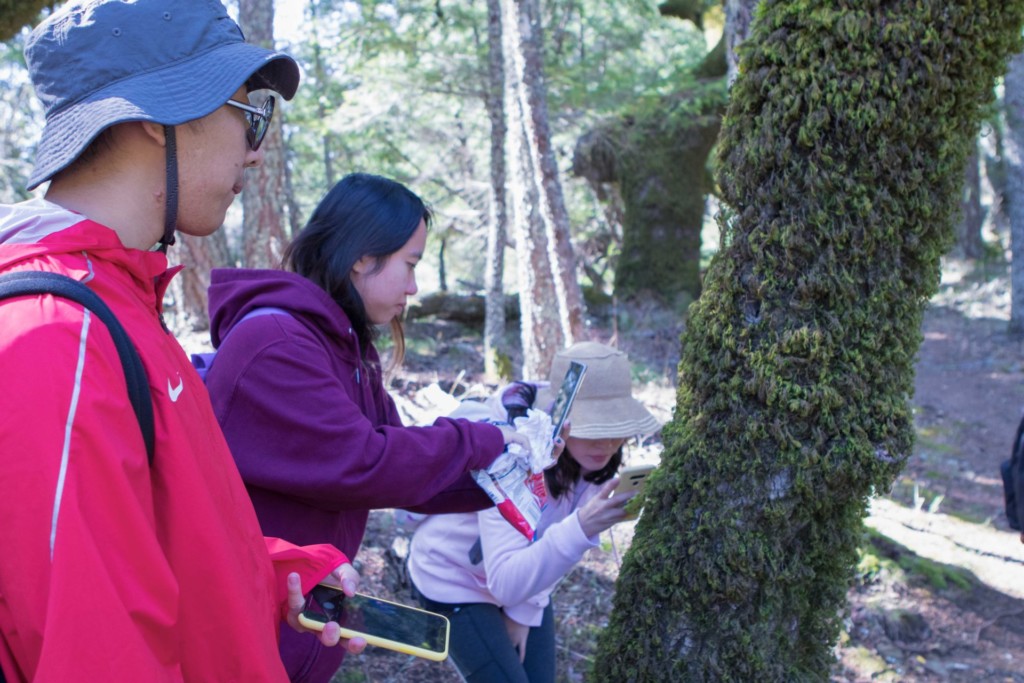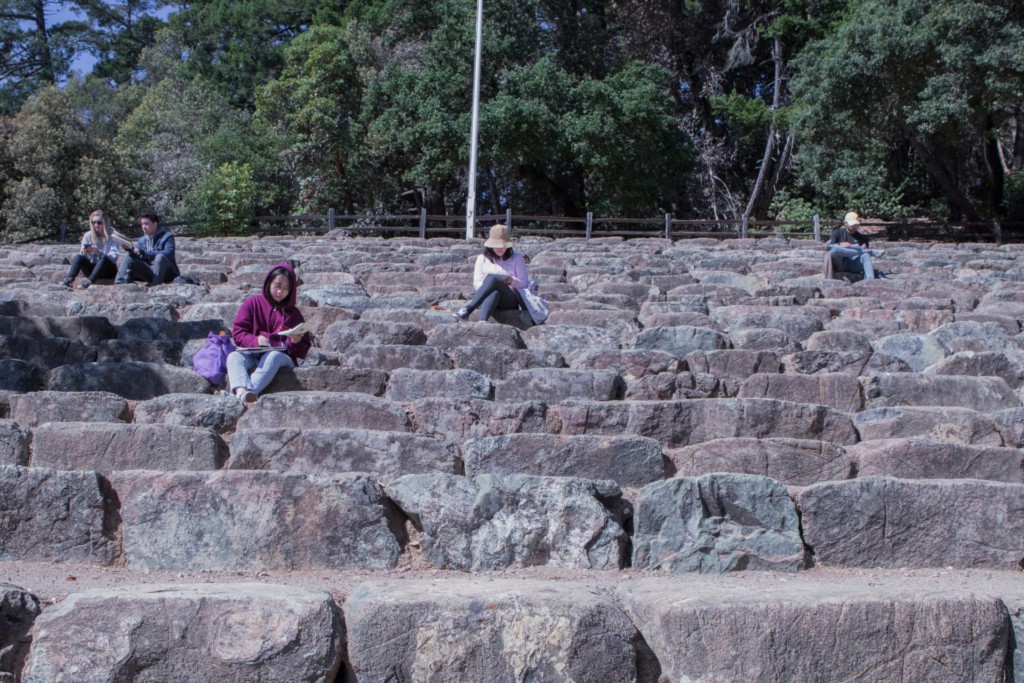School of Landscape Architecture Director Jeff McLane led students through a lesson on ecology during Mt. Tam field trip
By Nina Tabios
At almost 3,000 feet above sea level, Mount Tamalpais is the closest that Northern Californians can come to touching the sky. That is if the high wind doesn’t sweep them off first. School of Landscape Architecture Director Jeff McLane practically had to yell over the gusts to teach his students about the natural systems surrounding them earlier this semester, on Saturday, Sept. 28.
“Sixty million years ago, this mountain was under the ocean,” he hollered, pointing at the San Andreas Fault that had ground out the very mountain beneath their feet. From their vantage point, McLane and his six students could see the city skyline surrounded by the bay; turning their heads to the right and there was Stinson Beach and the Bolinas Lagoon.
That morning was a chilly end to a particularly warm summer-ending week in the Bay Area. With the sun in their eyes, the students squinted as they did watercolor drawings at the open-air stone venue, Sidney B. Cushing Memorial Amphitheatre, before trekking into the woods to examine the mountain’s wet habitats. This group of budding designers has been studying the Earth’s ecologies in McLane’s nature systems classes (both in the LAN undergraduate and graduate programs) to grasp how these ecologies will influence their future design work.

“The reason why we come here,” McLane said, noting every Bay Area resident should visit at least once, “is because on Mt. Tam we see and experience a lot of the systems we’ve been talking about—geologic, water systems, ocean, climate, wildlife—is all here.”
Students were asked to observe with their senses: what did they see, hear and smell? How the air felt different between the exposed areas versus the shaded ones. Colors were a major indicator of health, hints at processes underway.
“We’re in a classroom learning about natural systems, looking at slides. It’s not the same as being in it so coming out and just feeling the wind, feeling the air,” McLane said to his students. “Does it feel humid or does it feel dry, is it something in between? Having an experience where you get to natural systems around us is really a large part of what we’re doing.”

Anadelia Gonzalez, a landscape architecture undergraduate student, had been getting tips on watercolors from her brother who does fine art. She put her lessons to work, turning every sliver of nature into painted scenes in her field journal.
“I felt really connected up here, with the air, the wind. Everything was interesting, getting to know the history behind this mountain, the environments and how it all came together,” she said. It also happened to be her birthday. “The views were the best. I really loved the way I started my birthday, it made a big difference.”
